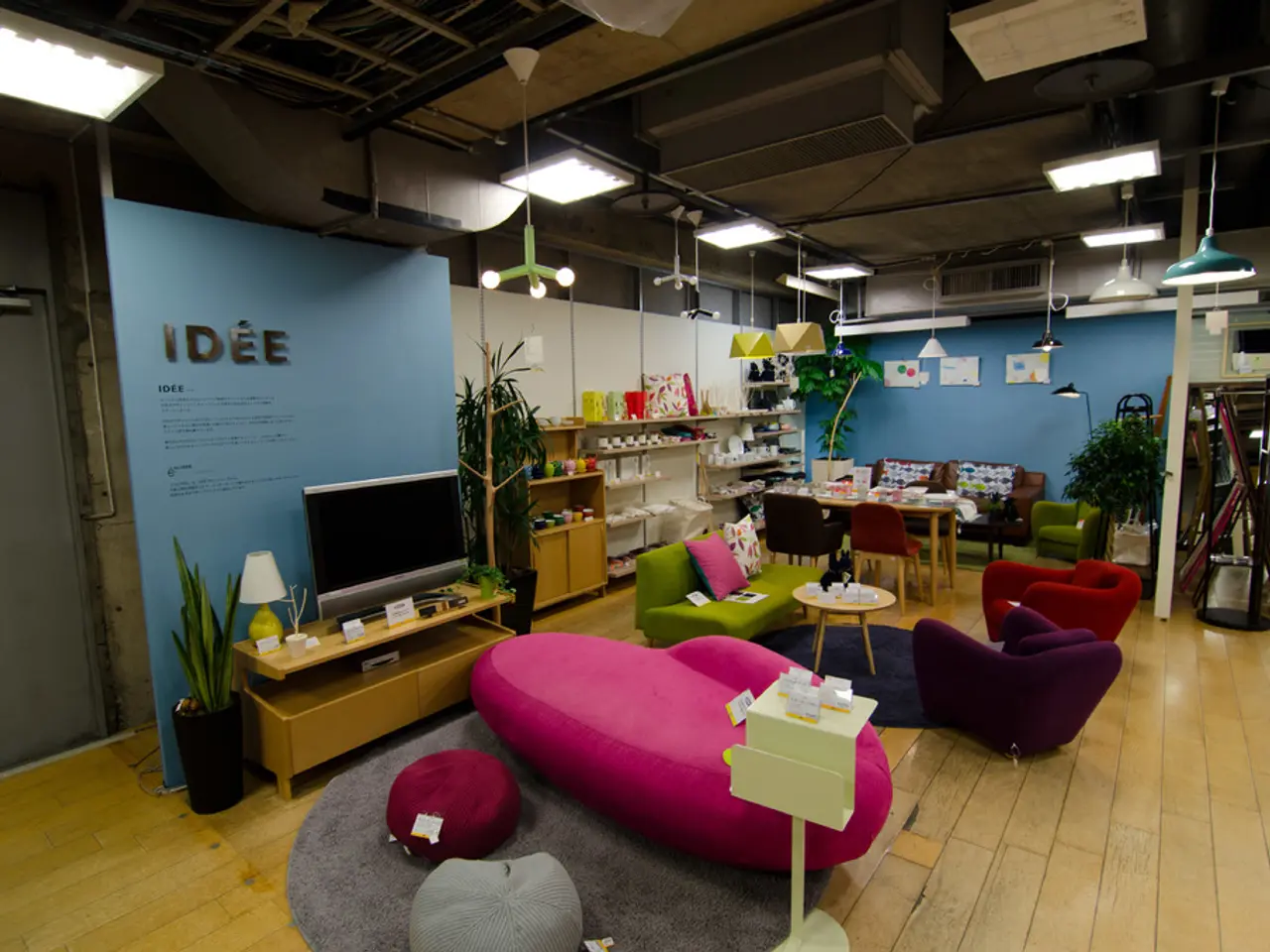Needing essential elements for a fully operational setup
Designing a functional home is more than just making it look appealing; it's about creating spaces that support health, productivity, and comfort while maintaining order and efficient storage. Here's a guide to help you design a home office, kitchen, living room, and bedroom that adheres to these principles.
Home Office
To create a functional home office, start with an ergonomic chair and desk sized for your workflow and posture support, ideally with adjustable height to switch between sitting and standing. Incorporate smart storage solutions such as filing cabinets, drawers, wall-mounted shelves, and multi-functional furniture to keep clutter out of sight and essential items within reach. Use vertical storage like wall shelves and pegboards to save floor space and organize supplies. Position the desk away from high-traffic areas to minimize distractions and optimize natural light if possible. Keep cable management built in or neatly organized to reduce clutter. Prioritize a clean layout—consider desk configurations like L-shaped or corner designs for efficient use of space and visual comfort.
Kitchen
In the kitchen, design ergonomics by placing often-used appliances and utensils within easy reach to reduce unnecessary bending or stretching. Utilize vertical storage (e.g., wall-mounted racks or tall cabinets) to maximize space. Install pull-out drawers and organizers inside cabinets for easy access and classification of kitchen tools and groceries. Prioritize countertop space by using multi-functional appliances or storage to keep surfaces clear.
Living Room
In the living room, opt for multi-functional furniture such as sofas with storage or coffee tables with hidden compartments to reduce clutter. Use shelving units and cabinets that combine open and closed storage to display decor and hide everyday items. Arrange furniture ergonomically for comfortable seating distances, proper lighting, and ease of movement. Keep pathways clear to maintain an organized, spacious feel.
Bedroom
In the bedroom, choose an ergonomic mattress and supportive pillows to promote good posture during sleep. Use storage beds, under-bed drawers, and built-in wardrobes to maximize space without overcrowding the room. Incorporate organization systems like labeled bins, closet organizers, and drawer dividers for efficient use of storage. Maintain a calm, clutter-free space by limiting furniture and storage to what is functional and essential.
General Tips Across All Spaces
- Prioritize multi-functional furniture that saves space and adapts to different needs.
- Maximize vertical space by using wall shelves and hooks.
- Organize with bins, labels, and categories to reduce time searching for items.
- Maintain ergonomic principles by arranging furniture and tools for posture support and ease of access.
- Use lighting strategically to enhance comfort and function.
Implementing these principles will create spaces that support health, productivity, and comfort while maintaining order and efficient storage. Ergonomics should not be overlooked in kitchen design, and properly functioning appliances, such as a dishwasher and trash can, are crucial in a kitchen. Common mistakes in kitchen design include prioritizing aesthetics over functionality, so ensure your kitchen has sensibly placed work surfaces and easily accessible appliances. In the living room, coordinated furniture and uncluttered corners contribute to a cozy and comfortable atmosphere. Proper lighting in the kitchen can prevent accidents, improve hygiene, and reduce eye strain. Efficient flow and tranquility are key in the bedroom design. Wall-mounted storage solutions are space-efficient for small home offices.
- When designing a home office, consider implementing wall-mounted shelves or pegboards for space-saving vertical storage, in addition to smart home-improvement solutions such as filing cabinets, adjustable desks, and multi-functional furniture.
- In the home-and-garden sector, apply ergonomic principles not only in creating a functional kitchen but also in organizing a clutter-free living room and a well-ventilated bedroom through appropriate furniture selection, lighting arrangements, and efficient storage systems.




